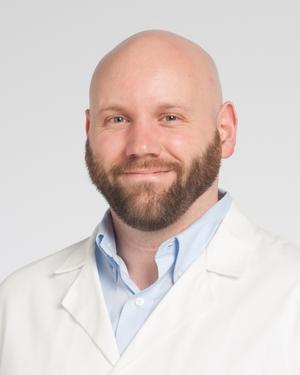Center for Therapeutics Discovery
Research
-
Research
- Research Overview
- Facilities
- Publications
- Members
Research Overview
The discovery and development of new medicines to treat many of society’s complex and inadequately treated diseases remains a lengthy, high-risk and high-cost endeavor. As such for-profit pharmaceutical companies seek to preferentially invest in advanced programs/targets where significant de-risking and target validation has already taken place or there is strong human genetic data to support the likelihood of a measurable impact to deliver a new treatment option. Cleveland Clinic launched the Center for Therapeutics Discovery to address the risk continuum in drug development and shorten the time between basic discovery to clinical testing. Through this investment we aim to accelerate better treatments and outcomes for our patients.
The Center operates across the enterprise where physicians identify unmet needs of patients, and our scientists in the lab work in collaboration with our clinical colleagues to identify targets and key pathways that may afford new treatment strategies.
Our research requires a multi-disciplinary team focus which includes medicinal chemistry, biochemistry, structural biology, chemical biology, cell biology, pharmacology, and resources and expertise in toxicology and drug metabolism. Through bringing together highly skilled teams of scientists, prudent application of resources and go/no-go milestones, we interrogate both the chemical and biological space of a given preclinical hypothesis utilizing state of the art technologies to understand target engagement as well as off-target pharmacology. These efforts afford high quality tool compounds and clinical candidates.
De-risked projects and molecules are brought to a position where clinical testing is pursued further through licensing, sponsored research, bridge partners, or start-up mechanisms. Our growing project portfolio consists of exciting, high-quality projects from a wide range of therapeutic impact areas, focusing on innovative treatments for patients that are driven by integration and collaboration with Cleveland Clinic's world leading institutes.

Facilities
The Center for Therapeutics Discovery is making advancements within a newly-renovated space that includes state-of-the-art nuclear magnetic resonance equipment and an advanced storage system for chemical libraries, vital for generating new compounds in this therapeutic program.

Medicinal Chemistry
The Cleveland Clinic's Center for Therapeutics Medicinal Chemistry Core utilizes state-of-the art technology in small molecule synthesis and purification towards the production of chemical probes, tool compounds, and preclinical candidates. Capabilities and services include reaction optimization, automated purification (silica gel, reverse-phase, SFC), and full characterization of final compounds (purity and identity including LCMS high-res accurate mass, 1H, and 13C NMR). The Medicinal Chemistry team operates with several models at C3TD including collaborative and contract-based projects both internal and external.
Equipment/Instrumentation
Synthesis equipment:
- ThalesNano H-Cube Mini Plus
- Biotage Initiate+8 Microwave
- 2 HepatoChem PhotoRedOx Photochemistry Kit
- Inert single module Glove Box
Purification equipment:
- 5 ISCO CombiFlash NextGen300
- 1 UV-directed preparative RP-HPLC GX-271 Gilson system
- 1 Biotage ACQU Prep reverse phase purification system
- 1 Labconco large scale lyophilizer evaporator
- Multiple Edwards high-vac pumps and Argon blow-down stations
- Analytical / Preparative Supercritical Fluid PIC Chromatography System
Other Key Instruments:
- NMR Facility Bruker DRX-600 (SampleJet 96-position Autosampler) and DRX-400
- Agilent Analytical LC-HRMS TOF mass spectrometer
Screening & Target Validation
The Screening and Target Validation Core brings together disciplines in cell biology, pharmacology, biochemistry, and structural biology coupled with state-of-the-art liquid handling and sample management technology for high-density phenotypic and biochemical-based screening platforms. Capabilities and services include assay development, protein expression, cell-line optimization/cloning, and assay ready 384-well plate generation. The STV team operates with several models including Investigator lead or collaborative based screening campaigns. Multiple types of screening library collections are available in-house including Life Chemicals bioactive and diversity libraries (58K) and Enamine Fragment based library collections (5K).
Equipment/Instrumentation
- Cytation 5
- BioTek Synergy 4
- 2x Multidrop Combi Dispenser
- Echo 550
- Tecan Liquid Handler EVO150
- Hamilton Verso S1 – automated sample storage unit
- 4titude a4s plate sealer
- Leica S9 stereoscope
- Beckman Coulter Vi-cell Blue Cell Analyzer
- 3x BioRad FPLC Quest Purification System and Fraction Collector
- Innova S44i incubator/shaker
Publications
Han, S. H.; Goins, C. M.; Arya, T.; Shin, W. J.; Maw, J.; Hooper, A.; Sonawane, D. P.; Porter, M. R.; Bannister, B. E.; Crouch, R. D.; Lindsey. A. A.; Lakatos, G.; Martinez, S. R.; Alvarado, J.; Akers, W. S.; Wang, N.S.; Jung, J. U.; Macdonald, J. D.; Stauffer, S. R. Structure-Based Optimization of ML300-Derived, Noncovalent Inhibitors Targeting the Severe Acute Respiratory Syndrome Coronavirus 3CL Protease (SARS-CoV-2 3CL pro). J. Med. Chem. 2021, 64, 2880-2904.
Link: https://pubmed.ncbi.nlm.nih.gov/34347470/
Wang, X.; Shirke, A.; Walker, E.; Sun, R.; Ramamurthy, G.; Wang, J.; Shan, L.; Mangadlao, J.; Dong, Z.; Li, J.; Wang, Z.; Schluchter, M.; Luo, D.; Wang, Y.; Stauffer, S.; Brady-Kalnay, S.; Hoimes, C.; Lee, Z.; Basilion J.P. Small Molecule-Based Prodrug Targeting Prostate Specific Membrane Antigen for the Treatment of Prostate Cancer. Cancers, 2021, 3, 417, PMID: 33499427.
Link: https://pubmed.ncbi.nlm.nih.gov/33499427/
Li, J.; Berk, M.; Alyamani, M.; Sabharwal, N.; Goins, C.; Alvarado, J.; Baratchian, M.; Zhu, Z.; Stauffer, S.; Klein, E. A.; Sharifi, N. Hexose-6-phosphate dehydrogenase blockade reverses prostate cancer drug resistance in xenograft models by glucocorticoid inactivation. Science Transl Med., 2021, 13, 595, PMID: 34039740.
Link: https://pubmed.ncbi.nlm.nih.gov/34039740/
Fang, J.; Zhang, P.; Zhou, Y.; Chiang, C.-W.; Tan, J.; Hou, Y.; Stauffer, S.; Li, L.; Pieper, A. A.; Cummings, J.; Chen, F. Endophenotype-based in silico network medicine discovery combined with insurance record data mining identifies sildenafil as a candidate drug for Alzheimer’s disease. Nature Aging, 2021, 1, 1175–1188.
Link: https://pubmed.ncbi.nlm.nih.gov/35572351/
Mitchell, K.; Shakya, S.; Silver, D. J.; Goins, C. M.; Wallace, L.; Roversi, G.; Schafer, R.; Kay, K.; Miller, T. E.; Lauko, A.; Kass, J. D.; Kashyap, A.; Mulkearns-Hubert, E. E.; Johnson, S.; Alvarado, J.; Rich, J. N.; Stauffer, S. R.; Hubert, C. G.; Lathia, J. D. The WRAD complex represents a therapeutically exploitable target for cancer stem cells in glioblastoma. bioRxiv, 2022 accepted.
Smalling, R. V.; Bechard, M. E.; Duryea, J.; Kingsley, P. J.; Roberts, E. R.; Marnett, L. J.; Bilbao, D. Stauffer, S. R.; McDonald, O. G. Aminopyridine analogs selectively target metastatic pancreatic cancer. Oncogene, 2022, PMID: 35031771.
Link: https://pubmed.ncbi.nlm.nih.gov/35031771/
Weber, G. E.; Khrestian, M.; Tuason, E. D.; Shao, Y.; Pillai, J.; Rao, S.; Feng, H.; Zhou, Y.; Cheng, F.; DeSilva, T. M.; Stauffer, S. R.; Leverenz, J. B.; Bekris, L. M. Peripheral sTREM2-Related Inflammatory Activity Alterations in Early-Stage Alzheimer’s Disease. J. Immunol. 2022, 208, 2283-2299.
Link: https://pubmed.ncbi.nlm.nih.gov/35523454/
Morrell, C. N.; Mix, D.; Aggarwal, A.; Bhandari, R.; Godwin, M.; Owens III, P.; Lyden, S. P.; Doyle, A.; Krauel, K.; Rondina, M. T.; Mohan, A.; Lowenstein, C. J.; Shim, S.; Stauffer, S. R.; Josyula, V. P.; Ture, S. K.; Yule, D. I.; Wagner III, L. E.; Ashton, J. M.; Elbadawi, A.; Cameron, S. J. Platelet olfactory receptor activation limits platelet reactivity and growth of aortic aneurysms. J. Clin. Invest. 2022, 132, e152373.
Members
Members of the Center for Therapeutics Discovery work in the following teams:
- Medicinal Chemistry
- Screening and Target Validation
- Administrative and Sample Management











Shaun Stauffer, PhD
Staff
Center Director
Director of Medicinal Chemistry
[email protected]
Lab Profile

Nancy Wang, PhD
Assistant Staff
Group Leader
Pharmacology
Co-Director
Screening & Target Validation
[email protected]



Bin Zhao, PhD
Project Staff
Senior Principle Scientist
Group Leader
Structural Biology and Fragment Technology
[email protected]